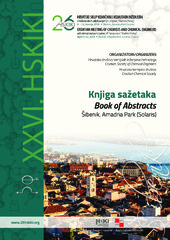Приказ основних података о документу
Alumina production from purified Bayer liquor
Proizvodnja glinice iz pročišćene Bayerove otopine
| dc.creator | Milovanović, Biljana | |
| dc.creator | Oljača, Đurđa | |
| dc.creator | Pavlović, Stefan | |
| dc.creator | Ostojić, Gordana | |
| dc.creator | Obrenović, Zoran | |
| dc.date.accessioned | 2020-11-20T11:42:55Z | |
| dc.date.available | 2020-11-20T11:42:55Z | |
| dc.date.issued | 2019 | |
| dc.identifier.isbn | 978‐953‐6894‐67‐3 | |
| dc.identifier.uri | https://cer.ihtm.bg.ac.rs/handle/123456789/3796 | |
| dc.description.abstract | Removal of some impurities from Bayer liquor, such as zinc compounds, allows obtaining alumina with low content of impurities incorporated in the crystalline structure. Impurities in alumina influence the quality of products obtained from alumina during electrolysis. In this research, the purification method presented in our previous paper was used for the purification of Bayer liquor, from which alumina was produced [1]. Crystallization of Bayer liquor was conducted at 52 °C during 24 h, whereas aluminium hydroxide with specific structural properties was used as the seed. The crystallization product (aluminium hydroxide) was calcined at 950 °C for 2 h with the heating rate of 5 °C min–1. The obtained alumina (Alumina I) is compared with alumina obtained without Bayer liquor purification (alumina from bauxite refinery „Alumina“ l.t.d., Zvornik, B&H – Alumina II). Zinc content is determined by atomic absorption spectroscopy. Structural and morphological properties are characterized by XRD, FT‐IR, N2‐physisorption, and particle size analyzer. Zinc content as ZnO in the initial and purified Bayer liquor was 0.0494 g dm–3 and 0.0057 g dm–3, respectively. Alumina from bauxite refinery contains 0.0260% ZnO, whereas the zinc content in alumina obtained after Bayer liquor purification was 0.016% ZnO. XRD analysis (Figure 1) showed that crystal structure is not destroyed and characteristic lines for both samples are at a 2Theta angle: 34.2, 37.2, 40.7, and 49.8. Bands characteristic for γ‐Al2O3 and α‐Al2O3 in pseudoboehmite structure can be observed at low wavenumbers in the obtained FT‐IR spectra [2]. Specific surface area and average pore diameter are shown in Table 1. These values are similar for both alumina samples. | en |
| dc.language.iso | en | sr |
| dc.publisher | Hrvatska: Hrvatsko društvo kemijskih inženjera i tehnologa (HDKI) | sr |
| dc.rights | openAccess | sr |
| dc.rights.uri | https://creativecommons.org/licenses/by/4.0/ | |
| dc.source | Book of Abstracts - 26th Croatian Meeting of Chemists and Chemical Engineers with international participation and 4th Symposium Vladimir Prelog | sr |
| dc.subject | Bayer liquor | sr |
| dc.subject | zinc compounds | sr |
| dc.subject | impurities | sr |
| dc.subject | alumina | sr |
| dc.subject | FT-IR | sr |
| dc.title | Alumina production from purified Bayer liquor | sr |
| dc.title | Proizvodnja glinice iz pročišćene Bayerove otopine | sr |
| dc.type | conferenceObject | sr |
| dc.rights.license | BY | sr |
| dcterms.abstract | Ољача, Ђурђа; Миловановић, Биљана; Павловић, Стефан; Остојић, Гордана; Обреновић, Зоран; | |
| dc.citation.spage | 182 | |
| dc.description.other | 26. hrvatski skup kemičara i kemijskih inženjera s međunarodnim sudjelovanjem i 4. simpozij Vladimir Prelog, 9. – 12. travnja 2019. Šibenik, Amadria park (Solaris) / 26th Croatian Meeting of Chemists and Chemical Engineers with international participation and 4th Symposium Vladimir Prelog, 9–12 April 2019, Šibenik, Amadria park (Solaris), Croatia | sr |
| dc.identifier.rcub | https://hdl.handle.net/21.15107/rcub_cer_3796 | |
| dc.identifier.fulltext | https://cer.ihtm.bg.ac.rs/bitstream/id/17753/Milovanovic_et_al_Alumina-production_from_purified_Bayer_liquor11.pdf | |
| dc.type.version | publishedVersion | sr |


